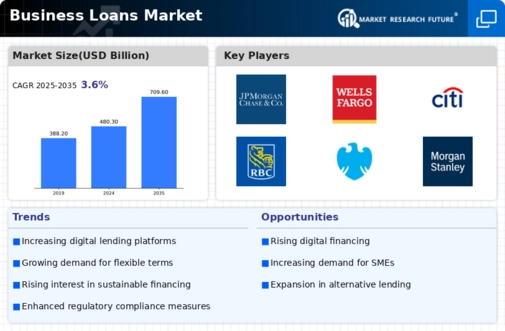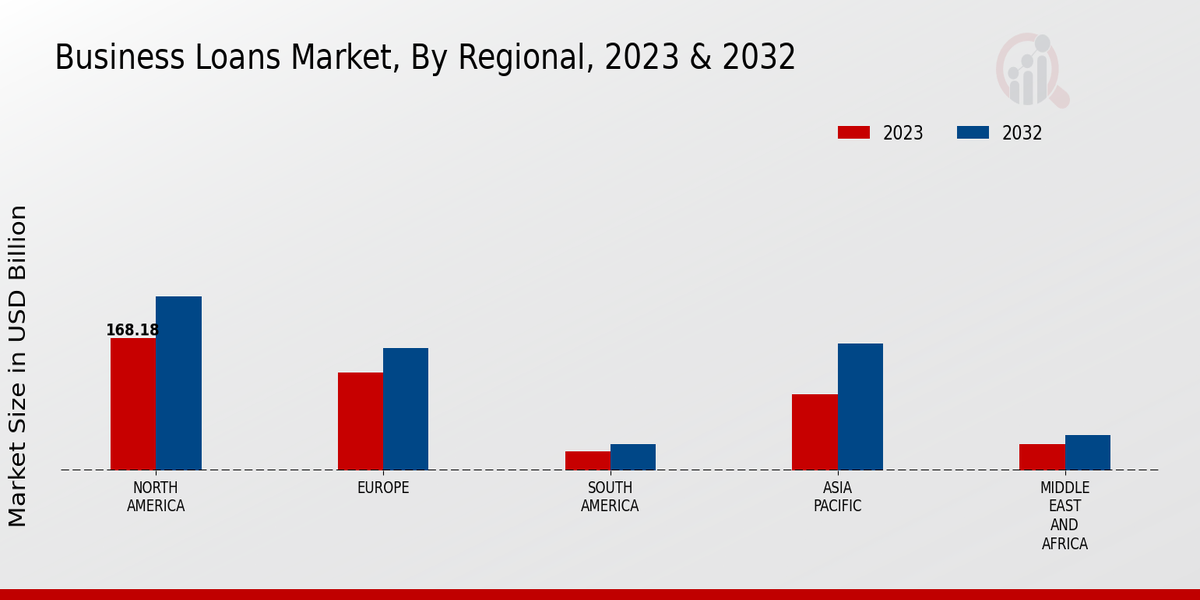Market Growth Projections
Increasing Demand for Capital
The Global Business Loans Market Industry is experiencing a surge in demand for capital as businesses seek to expand operations and invest in new technologies. In 2024, the market is projected to reach 480.3 USD Billion, driven by small and medium enterprises that require funding for growth initiatives. This demand is particularly pronounced in emerging markets where entrepreneurial activities are on the rise. As businesses increasingly recognize the importance of financial support in achieving their goals, the market is likely to witness sustained growth, reflecting a broader trend towards financial inclusivity and accessibility.
Global Economic Recovery and Growth
The Global Business Loans Market Industry is poised to benefit from ongoing economic recovery and growth trends. As economies stabilize and consumer confidence returns, businesses are more inclined to invest in expansion and innovation. This optimism is reflected in the projected market size of 709.6 USD Billion by 2035, indicating a steady increase in lending activities. Furthermore, the anticipated compound annual growth rate of 3.61% from 2025 to 2035 suggests that the market will continue to thrive as businesses seek financial support to capitalize on emerging opportunities. This growth trajectory underscores the interconnectedness of economic conditions and lending practices.
Technological Advancements in Lending
Technological innovations are reshaping the Global Business Loans Market Industry, enabling lenders to streamline processes and enhance customer experiences. The integration of artificial intelligence and machine learning allows for more accurate credit assessments, reducing the time taken to approve loans. This shift is particularly beneficial for small businesses that often face challenges in securing funding. As technology continues to evolve, it is expected that the market will expand, with lenders adopting digital platforms to reach a wider audience. This trend indicates a potential for increased competition among lenders, ultimately benefiting borrowers through better terms and conditions.
Emergence of Alternative Lending Sources
The Global Business Loans Market Industry is witnessing the emergence of alternative lending sources, which are diversifying the funding landscape for businesses. Peer-to-peer lending platforms and fintech companies are gaining traction, offering innovative solutions that cater to the specific needs of borrowers. These alternatives often provide quicker access to funds and more flexible repayment options, appealing to a broader range of businesses. As traditional banks adapt to this changing environment, the competition is likely to intensify, leading to improved services for borrowers. This shift may significantly alter the dynamics of the lending market, creating new opportunities for growth.
Regulatory Support for Lending Practices
Regulatory frameworks are evolving to support the Global Business Loans Market Industry, fostering a more conducive environment for lending. Governments are implementing policies that encourage financial institutions to provide loans to underserved sectors, thereby promoting economic growth. For instance, initiatives aimed at enhancing transparency and reducing bureaucratic hurdles are likely to facilitate easier access to credit. As a result, businesses may find it less daunting to seek financial assistance, contributing to the projected growth of the market. This regulatory support is essential in ensuring that the lending landscape remains robust and responsive to the needs of businesses.














